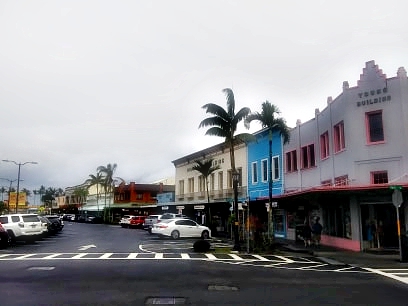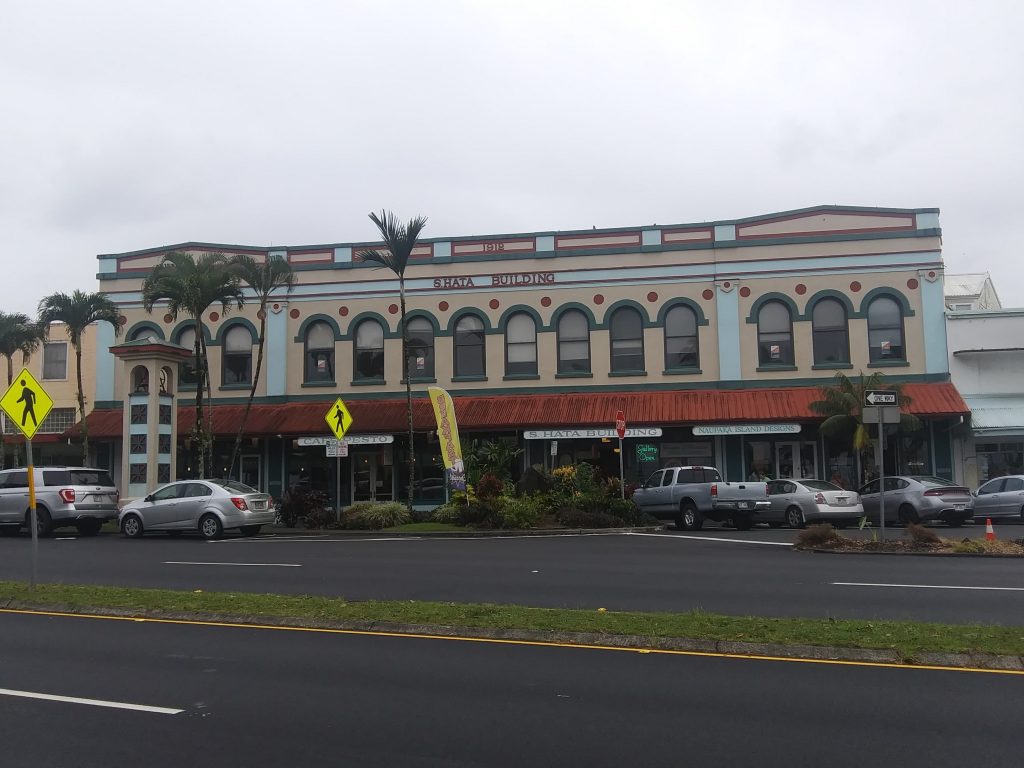Is Hilo Earthquake Ready?
Hawai‘i is referred to as earthquake country.
In fact, it is one of the most seismically active states in the US, experiencing thousands of earthquakes each year.
As recently as April 28, 2019, Big Island residents experience a magnitude 4.2 earthquake beneath the Kīlauea south flank, roughly 12 miles SE of the summit at a depth of 4.2 miles. The quake was widely felt across East Hawai‘i. It did not appear to result in any changes on Kīleaua Volcano.
Earthquakes in the past have caused millions of dollars in structural damage to the small town of Hilo.
The 1973 magnitude 6.2 Honomu earthquake produced shaking of intensity VIII, injuring 11 people and causing $5.6 million dollars of damage.
The 1975-magnitude 7.7 Kalapana earthquake caused a shaking intensity VIII in Hilo, causing $4.1 million dollars in damage.
(See more about the shaking intensity scale below.)
Hilo is the state’s fourth largest city by population with approximately 43,000 residents, according the the latest census report.
There are at least 40 historic buildings in this town, including schools, hospitals, police stations, office buildings, storefronts and churches.
According to Dr. Alan Downer of the Hawai‘i Department of Land and Natural Resources, “HRS Chapter 6E defines every building over 50 years old as a historic property. In terms, for example, for project/permit review purposes, we assess whether it is associated with historically important individuals or events or is architecturally distinguished or an example of a particular style, or the work of a master. This would include buildings listed in either/both the Hawai‘i register of historic places and/or the national register of historic places.”
Many can be found on the National Register of Historic Places—for example, the S. Hata Building (built in 1912), District Courthouse and Police Station (built in 1932), Rev. D.B. Lyman House (built in 1838), the Palace Theater (built in 1925), W.H. Shipman House (built in 1899) Volcano Block Building (built in 1914), U.S. Post Office and Office Building (built in 1915) and Waimea Elementary School (built in 1915), to name a few.
Hilo’s plantation-style architecture and historic storefronts give it a pre-World War II persona. Hilo is often considered to be the state’s oldest city. In fact, oral history can be traced back to 1,100 AD.
Historic buildings are especially vulnerable to seismic events, particularly those built before seismic codes were adopted.
Civil Defense Director Talmadge Magno said, “New construction has to be built to a certain code, so when those buildings were constructed, they were built based on what existed at that time… Retrofitting definitely was developed to protect the structural integrity and safety of the people using it, but it depends on the owners’ situation as far as putting out that kind of money to retrofit it.”
According to Brian Shiro, seismic network manager at USGS Hawaiian Volcano Observatory, “What determines the potential for damage is how intense the seismic waves generated by the earthquake are in any given area. Shaking with ‘very strong’ intensities of VII can cause considerable damage to poorly-built structures but generally little damage to well-designed structures. It takes shaking at ‘severe’ intensity VIII to cause considerable damage to most ordinary buildings. At ‘violent’ intensity IX, even specially designed earthquake-tolerant structures can have considerable damage. ‘Extreme’ intensity X can destroy most structures.”
Shiro added, “Given all the caveats about what affects shaking intensity (distance from the earthquake, type of terrain, etc.), the rule of thumb is that earthquakes above magnitude-6.0 in Hawai‘i generally can produce damaging shaking intensities over large areas. However, even earthquakes as small as magnitude 5.0 can produce potentially damaging intensities over limited areas.”
The state has taken some action to address building concerns.
The dilapidation of buildings in the Waiakea Peninsula has prompted the Hawai‘i County to form its own Banyan Drive redevelopment agency.
There is also a bill which was recently adopted in March of 2019, House Bill 910, requiring the state Office of Planning to conduct a study on the infrastructure needs of Banyan Drive. The study would look at infrastructure that needs to be improved, as well as barriers to redevelopment of the area. However, this bill will not take effect until the end of 2050.
In addition to dilapidated buildings, Hawai‘i’s infrastructure could use improvement.
Steven Doo, co-chair of Hawai‘i Infrastructure Report Card Committee reported that “Most of the state’s infrastructure has been operating beyond its useful life with some of the components in the system over 100 years old.”
A 2017 report indicates that 29% of the state’s roads are in poor condition, ranking Hawai‘i the fifth worst in the nation. For highway funding as a percentage of the total government spending, Hawai‘i is the 10th lowest in the nation. Nearly 6% of Hawai‘i roads were deemed deficient. Dams posed the most hazard in Hawai‘i than any other state.
The American Society of Civil Engineers Hawai‘i section ranked most of Hawai‘i’s infrastructure (including roads, schools, water and bridges) as poor to fair, giving Hawai‘i an overall infrastructure grade of “D+.”
Given these reports, some residents feel unsafe in their workplace during earthquakes.
“It was terrifying being in that building,” said a Big Island resident who works in Bayfront. “It really did feel like the building was going to fall apart. In 2018, when all the earthquakes started happening, first the 6.9 hit and the floors literally bounced. Things were shaking off the desk and the floor was vibrating so much. I was in absolute terror. Then the aftershock hit and in some ways it felt worse than the original. We had falling plaster. The stairwell split. One of the treads on the stairs buckled. Directly after that, our roof started leaking like crazy.”
The resident said it was was hard to go back into that building after that.
“I wasn’t sure it was structurally sound,” the resident said. “The county has looked it over and said it’s ok. As far as earthquakes, all the buildings are so old and so poorly maintained. I think Hilo is a real earthquake disaster waiting to happen.”
I just think about what happened in Christchurch in 2011 and that could so easily happen in Hilo,” the resident reflected. “Our building was built in the early 1900s and it is an absolutely stunning example of Art Deco architecture and it should be restored and not let fall to pieces in an earthquake.”

Hilo Bayfront, May 2019. PC: Sierra Hagg
In general, during an earthquake, one should drop, find cover under the nearest sturdy table and hold on in order to help you move with your sheltering furniture. If you can’t make it to a table, your best bet is to hold your head and neck with your hands next to an interior wall away from windows.
The Great Hawai‘i Shake Out has more safety tips and materials.
“In high-hazard and moderate-high-hazard seismic areas which define the Island of Hawai‘i, vulnerable historic and public buildings probably should have such protection,” said USGS HVO Seismic Network Manager Shiro.
“The Big Island needs to be prepared for earthquakes,” Hawai‘i Island Civil Defense Director Talmadge Magno said. “We’ve had several 5.0-plus in the last 30 days. Residents need to be aware we do have big ones now and then—even though it has been a while since we’ve had above a 6.9. ”
Shiro reminds Hilo residents: “It’s not a matter of if, but when a strong earthquake will occur.”

















